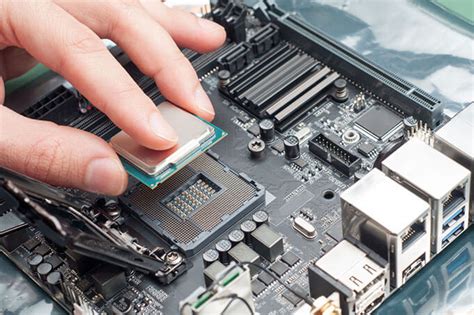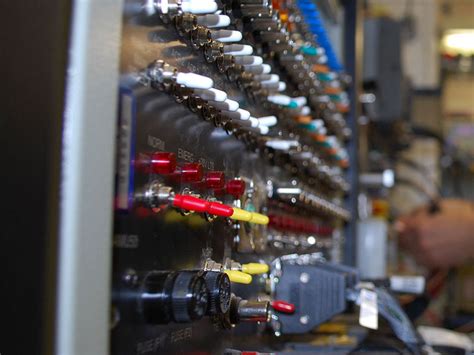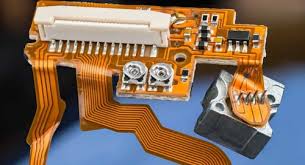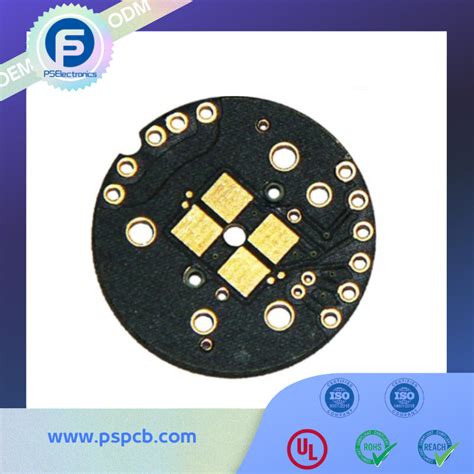Efficient Strategies for Quick Turn Assembly in Manufacturing

Key Takeaways
In today’s fast-evolving manufacturing landscape, quick turn assembly is increasingly becoming a necessity. Understanding what quick turn assembly entails is vital; it emphasizes the need for speed and efficiency without sacrificing quality. The significance of rapid assembly is underscored by the rise in demand for Printed Circuit Board Assembly (PCB Assembly), commonly referred to as PCBA.
Manufacturers must confront key challenges that arise in quick turn assembly, such as managing tight deadlines and ensuring consistent quality in assemblies. Overcoming these challenges often involves adopting innovative strategies that incorporate modern tools and technologies designed for quick turn assembly improvement. For instance, implementing automation technologies can streamline workflows, leading to significant reductions in lead times.
"The ability to adapt quickly to market demands is crucial for survival in the competitive manufacturing environment."
By focusing on process optimization, manufacturers can effectively manage time while enhancing productivity. Techniques such as lean manufacturing and just-in-time inventory systems are recommended practices to achieve these goals. Additionally, investing in the latest software solutions not only supports efficiency but also provides real-time data analytics, allowing businesses to respond proactively to market changes.
Moreover, staying ahead of industry trends will enable manufacturers to continuously refine their pcba processes. As the demand for swift delivery and high-quality products grows, embracing these strategies will help ensure that organizations remain competitive and capable of meeting modern customer expectations efficiently.

Understanding Quick Turn Assembly: Definition and Importance
Quick turn assembly is an essential practice in the landscape of modern manufacturing, particularly pivotal for industries such as pcb assembly and pcba production. This method emphasizes the ability to accelerate assembly processes without compromising quality, enabling manufacturers to respond swiftly to ever-changing market demands. The importance of quick turn assembly lies in its potential to provide competitive advantages, allowing companies to introduce products faster than their competitors. By focusing on efficiency, manufacturers can optimize workflows, minimize waste, and adapt operations agilely.
To realize the benefits of quick turn assembly, it is crucial to understand its role within the broader manufacturing context. Quick turn assembly pertains not only to rapid production but also involves comprehensive planning and a robust understanding of supply chain dynamics. This area of focus helps businesses align their resources effectively; for instance, utilizing just-in-time inventory systems can dramatically reduce lead times associated with pcba projects.
The adoption of quick turn strategies not only enhances customer satisfaction through timely deliveries but also introduces flexibility in product design and customization. As manufacturing industries face increasing pressure from market fluctuations and customer expectations for rapid fulfillment, investing in quick turn assembly capabilities is indispensable for maintaining relevancy and profitability.
In summary, the definition and importance of quick turn assembly highlight its role as a catalyst for innovation within manufacturing processes while ensuring that businesses leverage opportunities for growth in highly competitive environments.
Key Challenges in Quick Turn Assembly and How to Overcome Them
In the realm of quick turn assembly, manufacturers often face significant challenges that can impede efficiency and productivity. One of the primary hurdles is the tight turnaround times that demand rapid adaptability and precision. This urgency can lead to potential errors in pcb assembly and pcba, ultimately resulting in increased costs and delayed deliveries. To tackle these issues, fostering a culture of continuous improvement is vital. Implementing robust training programs for assembly line workers can enhance their skills, allowing for quicker resolution of any arising problems. Additionally, employing real-time monitoring tools equips teams with the ability to identify and address bottlenecks promptly. Effective communication across departments is also paramount; ensuring that all stakeholders are aligned can significantly streamline workflows. Moreover, embracing automation technologies, such as robotic assembly systems, not only boosts speed but also enhances accuracy, minimizing the likelihood of defects. By acknowledging these challenges and actively seeking solutions, manufacturers can navigate the complexities of quick turn assembly with greater ease and maintain a competitive edge in today’s fast-paced market environment.
Optimizing Processes: Techniques for Faster Assembly
To achieve quick turn assembly effectively, manufacturers must focus on optimizing their processes. One key technique is the implementation of lean manufacturing principles, which aim to eliminate waste and enhance value within the pcb assembly workflow. By adopting methodologies such as Just-In-Time (JIT) production, companies can streamline their operations, ensuring that materials arrive exactly when needed, thus minimizing storage costs and reducing lead times. Another important aspect is the integration of advanced technologies like automation and robotics. These tools can significantly bolster the efficiency of pcba, leading to faster assembly times and a reduction in human error. Additionally, incorporating a robust communication system among team members ensures that any potential delays are swiftly addressed. Empowering employees through continuous training can also facilitate quicker adaptations to new processes or technologies, reinforcing a culture of agility in the manufacturing environment. Furthermore, leveraging data analytics allows companies to monitor performance metrics closely; thus driving informed decisions that foster improvements in throughput and overall productivity within quick turn assembly settings. By focusing on these optimization techniques, manufacturers can not only meet fast-paced market demands but also maintain high standards of quality in their products.
Tools and Technologies for Quick Turn Assembly Improvement
In the realm of quick turn assembly, leveraging the right tools and technologies is essential for enhancing efficiency and productivity. The integration of advanced automated systems means that processes can be executed with increased precision and speed. For instance, implementing automated inspection systems not only minimizes errors but also enables rapid feedback, ensuring that assemblies meet quality standards without unnecessary delays. Furthermore, utilizing real-time data analytics allows manufacturers to monitor production metrics consistently, identifying bottlenecks in the assembly process before they escalate into larger issues.
Another significant advancement in pcb assembly is the adoption of collaborative robots, commonly known as cobots, which can work alongside human operators to increase capacity while reducing fatigue-related errors. Additionally, employing modular equipment can further streamline operations; such systems are designed to be reconfigured quickly to accommodate various production lines based on customer demand. As we explore these modern technologies—and specifically their impact on pcba (printed circuit board assembly)—it’s clear that adopting a proactive approach in utilizing these tools is crucial for maintaining competitiveness. By continually investing in innovation and embracing technology within quick turn assembly, manufacturers can not only reduce lead times but also improve overall output quality, ultimately meeting fast-paced market demands efficiently.
Reducing Lead Times: Strategies for Effective Time Management
In the realm of quick turn assembly, particularly in the pcb assembly industry, managing time efficiently is critical to maintaining a competitive edge. Lead times can be significantly reduced through various strategies aimed at optimizing scheduling, improving workflow, and eliminating bottlenecks. For instance, implementing just-in-time (JIT) manufacturing practices ensures that components arrive exactly when needed, thus minimizing idle time and resources. Additionally, employing advanced planning systems can enhance visibility into the production schedule and resource allocation. This visibility allows for more agile responses to changing demands, ensuring that the pcba workflow adapts seamlessly to market fluctuations. Another key technique involves cross-training employees across multiple tasks; this flexibility means that the workforce can be dynamically allocated based on immediate needs, promoting an agile response to unforeseen delays or changes in assembly priorities.
By focusing on these strategies—like effective scheduling and workforce management—manufacturers can not only reduce lead times but also enhance overall productivity in quick turn assembly environments. Understanding these time management techniques helps in establishing a well-coordinated assembly line where resources are utilized optimally to meet fast-paced market demands without sacrificing quality or accuracy.
Enhancing Productivity in Quick Turn Assembly Environments
In today’s competitive manufacturing landscape, enhancing productivity in quick turn assembly environments is essential for success. One of the key strategies involves utilizing advanced tools and technologies, which not only streamline workflows but also improve the quality of pcb assembly processes. By implementing automated systems and robotics, manufacturers can reduce handling time and increase throughput. Additionally, adopting lean manufacturing principles helps eliminate waste and optimize space, allowing teams to focus on core tasks more efficiently. The integration of real-time data analytics into assembly lines enables proactive decision-making, ensuring that any potential bottlenecks are addressed promptly. Furthermore, effective training programs for staff on the latest pcba practices can lead to significant improvements in overall productivity, as employees become adept at using innovative techniques and equipment. It is crucial to foster a culture of continuous improvement within teams to keep pace with evolving market demands while maintaining high standards in production speed and quality. Ultimately, by prioritizing productivity enhancement strategies within quick turn assembly environments, manufacturers can better meet customer expectations and achieve sustained growth in an ever-changing industry landscape.

Case Studies: Successful Implementations of Quick Turn Assembly
In recent years, numerous organizations have successfully navigated the complexities of quick turn assembly in their manufacturing processes, leading to notable improvements in efficiency and productivity. One exemplary case is a PCB assembly company that revamped its workflow by adopting lean manufacturing principles. By implementing value stream mapping, the company identified bottlenecks and eliminated non-essential steps in the assembly line, resulting in a reduced cycle time for PCBA processes. Furthermore, this organization integrated advanced automated equipment that accelerated component placement and soldering stages. As a result, they decreased assembly lead times by over 30%, enabling them to meet urgent customer demands without compromising on quality.
Another notable example comes from a telecommunications manufacturer that faced pressures from rapid market changes. They embraced a just-in-time inventory strategy that synchronized their supply chain with production schedules. By fostering close partnerships with suppliers and employing real-time tracking systems, they minimized delays in receiving parts necessary for PCB assembly. This strategy not only enhanced flexibility but also resulted in significant cost savings and improved responsiveness to emerging market opportunities. The success of these case studies underscores the importance of adopting tailored strategies for quick turn assembly, as they pave the way for manufacturing resilience and competitiveness in an increasingly fast-paced environment.
Future Trends in Quick Turn Assembly and Manufacturing Practices
As the landscape of manufacturing continues to evolve, quick turn assembly is becoming increasingly critical to maintaining competitive advantage. One noticeable trend is the integration of automation into pcb assembly processes. By leveraging advanced robotics and AI-driven technologies, manufacturers can streamline operations, allowing for greater precision and a significant reduction in cycle times. Additionally, this trend is complemented by the rise of cloud-based management systems that facilitate real-time monitoring and enable highly efficient decision-making.
Another key development is the growing emphasis on sustainable practices within quick turn assembly. Companies are beginning to prioritize eco-friendly materials and processes, which not only meet regulatory requirements but also appeal to environmentally conscious consumers. The shift towards sustainability often drives innovation in pcba techniques, making them more efficient and cost-effective.
Furthermore, the fine-tuning of supply chain logistics plays a pivotal role in enhancing quick turn assembly capabilities. By adopting just-in-time strategies and fostering closer collaboration with suppliers, manufacturers can significantly minimize lead times while ensuring that quality standards remain uncompromised. This proactive supply chain management allows for rapid responses to fluctuating market demands.
In summary, the future of quick turn assembly combines technological advancements with sustainable practices and agile supply chain strategies, shaping a more efficient manufacturing landscape. These trends indicate that companies embracing these transformations will better position themselves for success in an increasingly fast-paced market.

Conclusion
In conclusion, the landscape of quick turn assembly in manufacturing is shaped by the need for agility and efficiency, particularly within the realm of PCB assembly and PCBA. As industries strive to adapt to ever-changing market conditions, the strategies outlined throughout the article serve as a vital guide. By focusing on process optimization, embracing innovative tools and technologies, and fostering a culture of continuous improvement, organizations can significantly reduce lead times. Furthermore, enhancing productivity through streamlined workflows allows businesses to respond promptly to customer demands and competitive pressures. Looking ahead, it is essential for manufacturers to remain proactive in adopting these efficient strategies. This not only positions them for immediate success but also ensures they are well-equipped to navigate future trends in quick turn assembly practices. Emphasizing these core concepts will undoubtedly yield substantial benefits as companies aim to thrive in a fast-paced environment where responsiveness is key.
FAQs
Q: What is quick turn assembly?
A: Quick turn assembly refers to the rapid manufacturing process that enables organizations to assemble products in a shorter timeframe. This is especially crucial in sectors such as pcb assembly where time-to-market can significantly impact competitiveness.
Q: Why is quick turn assembly important in manufacturing?
A: It allows manufacturers to respond swiftly to changing market demands, reduce inventory levels, and lower costs. Implementing efficient pcba solutions can elevate production capabilities while ensuring quality.
Q: What are the key challenges of quick turn assembly?
A: Some challenges include managing supply chain disruptions, maintaining quality standards during accelerated production, and ensuring skilled labor availability. Overcoming these requires strategic planning and leveraging technology.
Q: How can processes be optimized for quick turn assembly?
A: Techniques such as lean manufacturing principles, continuous improvement practices, and automation implementation are effective for optimizing processes in quick turn assembly, leading to enhanced efficiency.
Q: What tools and technologies facilitate quick turn assembly?
A: Advanced software for design automation, real-time tracking systems, and robotic assistants are pivotal tools that improve the pcb assembly process by minimizing errors and increasing speed.
Q: What strategies help reduce lead times in manufacturing?
A: Strategies like just-in-time inventory management, effective supplier collaboration, and streamlined production workflows play critical roles in reducing lead times effectively.
Q: How can productivity be enhanced in quick turn assembly environments?
A: Implementing flexible workstations, investing in employee training, and using data analytics for performance monitoring can significantly enhance productivity within a pcba setting.







